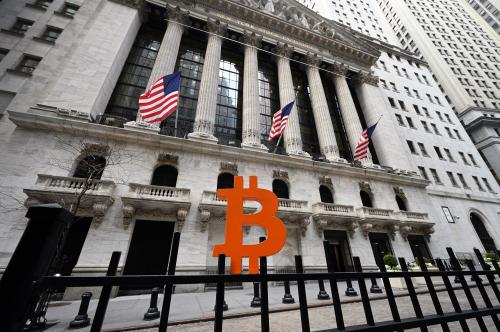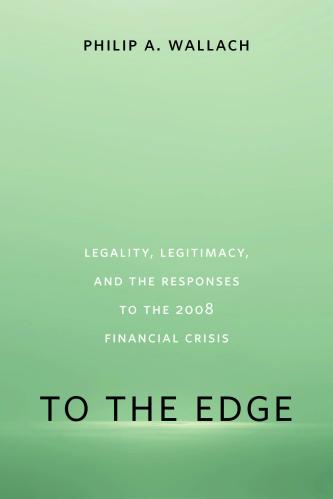During Mark Zuckerberg’s testimony to the House Financial Services Committee on October 23, 2019, he pointed to the threat posed by China’s incoming state-run digital currency as the reason U.S. regulators should be more accommodating toward Facebook’s Libra cryptocurrency. Interestingly, Libra was the reason cited for accelerated development of the digital yuan, and the surge in interests on central bank digital currency (CBDC) around the globe. French Finance Minister Bruno Le Maire considers Libra harmful to sovereignty and proposes the European Central Bank (ECB) issue its own public digital currency instead. Bank of England Governor Mark Carney also proposed the idea of a Libra-like digital currency issued by central banks to replace U.S. dollar as the reserve currency of the world.
CBDCs around the world
The Bank of International Settlement’s (BIS) survey of 63 central banks in 2018 shows the majority were researching or starting proof-of-concept work on digital currencies, although most of them were not ready yet to actually launch. A survey of 23 central banks conducted by Official Monetary and Financial Institutions Forum (OMFIF) and IBM between July and September 2019 shows similar progressive yet cautious attitude among central bankers.
However, several countries have already taken concrete steps or announced their intentions to launch a CBDC in the future. The following table lists select countries in various stages of creating a national digital currency.
| Bahamas | Sand Dollar to be rolled out by the end of 2019. |
| Barbados | Blockchain-based version of the Barbadian dollar released in 2016. |
| China | Digital Currency Electronic Payment (DCEP) expected to launch soon. |
| France | Bank of France plans to start pilot testing a CBDC in early 2020. |
| Marshall Islands | Marshallese Sovereign (SOV) to be released in near future. |
| Saudi Arabia and United Arab Emirates | Central banks of the two gulf nations will jointly issue a digital currency named “Aber” for interbank money transfer. |
| Sweden | E-krona project started in 2017 to study the need and feasibilities for a CBDC. |
| Thailand | Prototype developed for a wholesale CBDC used for real time interbank settlements. Testing of cross-border transfer under way. No immediate plan for retail or general purpose CBDC for consumers. |
| Turkey | Pilot test of digital Lira expected to be completed by the end of 2020. |
| Uruguay | E-peso successfully piloted from Nov. 2017 to Apr. 2018. |
As a digital currency, a CBDC’s most obvious benefit is faster, cheaper, and more efficient payments, both domestically and cross-border. In addition, a CBDC also reduces costs of making physical money (the Federal Reserve paid $800 million in 2018 to cover the cost of printing and handling paper money). In the OMFIF survey, maintaining competitive payments systems (against private sector alternatives) is the most significant factor motivating CBDC efforts. Since the launch of blockchain-based Barbadian dollar in 2016, small merchants on the island of Barbados have been able to reduce the costs for accepting electronic payments, save costs for securing cash, and start selling online.
Financial inclusion is the main reason behind the Republic of Marshall Island’s plan to issue a CBDC called the Marshallese Sovereign, or SOV. Due to geographic isolation, the tiny Pacific nation is on the verge of losing its financial connection to the rest of the world, as the only bank that operates in the country considers closing its unprofitable branches. A CBDC built on the blockchain technology will ensure the continuity of basic financial services to the citizens and partially functions as a public good.
In early November, Turkey became one of the latest countries to declare the development of a CBDC. To be completed by the end of 2020 as part of the Annual Presidential Program, the pilot for the digital Lira includes the development of a software platform for instant payment. The Turkish government views a sovereign digital currency as a step toward achieving “Istanbul’s goal of becoming an attractive global financial center”.
Should the Federal Reserve Create a Digital U.S. Dollar?
In September, U.S. Reps. French Hill (R-AR) and Bill Foster (D-IL) wrote an open letter to Fed Chairman Jerome Powell urging the Federal Reserve to consider developing a U.S. dollar digital currency. Former U.S. Commodity Futures Trading Commission chairman J. Christopher Giancarlo also called for the Fed to issue a digital version of the U.S. dollar to maintain its popularity for international payments.
Among the central bankers, Philadelphia Federal Reserve President Patrick Harker thinks a digital U.S. dollar is inevitable, but argues that the U.S. should not be the first country to issue a CBDC. Fed Governor Lael Brainard further cautions that given the status of the U.S. dollar as the reserve currency of the world, “central bank digital currency for general purpose use—that is, for individual consumer use—would raise profound legal, policy, and operational questions.” She is specifically concerned with privacy, monetary policy, financial stability, and operational risks after digitizing the U.S. dollar. Regardless, the Fed is actively researching a digital dollar and recruiting experts on digital currencies, and the FedNow payment system under development will achieve the same goal as whole-sale CBDC – expediting interbank money transfers.
Public Policy Impacts of a CBDC
Supported with the blockchain technology, a CBDC is also more difficult to counterfeit than paper notes and coins. Initially designed to support bitcoin, the blockchain technology employs complex cryptography to prevent double-spending—the digital equivalent of making an identical copy of a banknote. Furthermore, the blockchain for a CBDC will most likely to be permissioned, or restricted to authorized users, adding another layer of defense. Unlike other digital forms of money, a CBDC would have a single ledger under tight control by the central bank, as distributed copies of the ledger could be stored only on nodes operated by the central bank itself or other authorized parties.
As stated by former International Monetary Fund Chair and the new ECB president Christine Lagarde, a CDBC “could satisfy public policy goals, such as financial inclusion, and security and consumer protection; and to provide what the private sector cannot: privacy in payments”. The report published by BIS notes that the level of anonymity is one of the key decisions for designers of a CBDC, and technologies exist to render the transactions of a digital currency private and untraceable. The ability for central banks to trace payments is instrumental in meeting anti-money laundering and counter terrorism financing (AML/CFT) requirements. Moreover, transparency of a CBDC also makes it easier for government agencies to fight criminal activities such as tax evasion and bribery. However, this also raises questions about how governments might use payment information.
About the same time as Christine Lagarde became president of European Central Bank, a draft document proposed by the Finnish presidency of the Council of the European Union recommends ECB and central banks of EU countries to take concrete steps toward issuing CBDCs. In December, while announcing an initiative to start a digital currency project in early 2020, Bank of France Governor Francois Villeroy de Galhau also urged the ECB to move quickly toward an e-euro. With an open advocate for digital currencies at the helm of one of the world’s most powerful central banks, we could expect a digital euro initiative to gain momentum. For the first time in history, there are no technical barriers for sovereign monies to compete like any other technology services. The trend toward CBDCs will probably continue, and the ramifications could be felt for years to come.
The Brookings Institution is committed to quality, independence, and impact.
We are supported by a diverse array of funders. In line with our values and policies, each Brookings publication represents the sole views of its author(s).











Commentary
The current landscape of central bank digital currencies
December 13, 2019